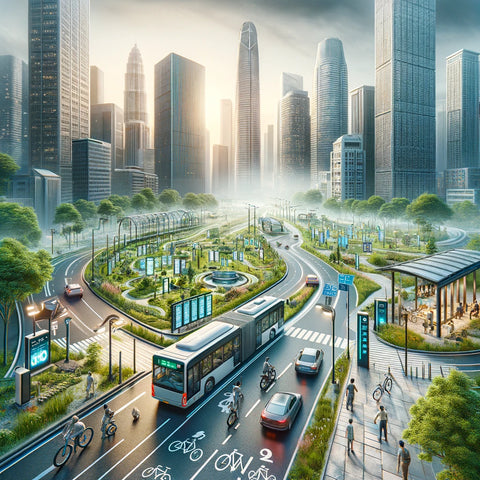Taking on Urban Air Pollution
Clearing the Skies: My Journey in Urban Air Pollution Control
Urban Air Pollution
Combating pollution in urban areas has been a challenging but ultimately rewarding aspect of my life's path. Envision a bustling city where pollution cloud hides the skyline and cars emit smoke into the atmosphere. My only weapons were my determination and hope that things will improve; that was my battlefield.
For the first part of the journey, my favorite phrase is the "Great Greening." It was like trying to sell ice to polar bears when you tried to convince the city council to set aside money for parks and green areas. Still, those who persisted saw their efforts paid off, and the city soon became a verdant haven with parks and rooftop gardens springing up in all corners. Being a witness to the transformation of urban jungles into lush refuges was more exciting than any chase scene from an action film.
The result was known as the "Electric Revolution." Promoting electric vehicles and public transit in a city that uses so much gasoline is like attempting to convince a kid that vegetables are healthier than candy. The game-changer were electric buses, which could go through the streets as stealthily as a ninja. It was a victory with each new electric vehicle and a sign of progress with each new charging station.
Finding bike lanes and walkways for pedestrians was my next goal. Envision a city where cars used to have complete freedom of movement, and now they're attempting to build bike lanes and sidewalks. It felt as though city planners were being led through an obstacle course. However, the day we unveiled the city's inaugural bike lane, the overwhelming number of riders poured onto the streets, creating an atmosphere reminiscent of a hopeful march.
In the same way that a lighthouse guides ships to a safe harbor, monitoring the air quality became our radar, guiding the city's endeavors. The real-time data acquired from the city's air quality monitoring stations was revealing and concerning. We were able to make informed decisions, evaluate our progress, and change our approach because of it. It was our "aha" moment when we understood that we were fighting not only against pollution but also for the health of the community.
Photographing this journey brings to life the transformation of cityscapes brought about by efforts to decrease air pollution. A strong reminder of the need of teamwork, creative problem-solving, and optimism is this. According to what I've learned from my experience, changing a tanker ship's course is like altering a city's air quality—it takes time, work, and determination, but it's feasible.
Urban air pollution control has taught me that cities can be improved, made greener, and lived in by everybody if people are willing to be innovative, collaborate, and tackle problems directly.






Leave a comment